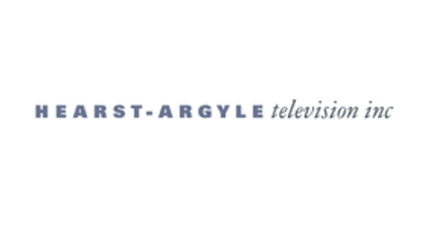Hearst-Argyle Television: Commitment to Local On-Air, Online, Mobile and On-Demand

Profiles of emerging companies make for compelling reading, but sometimes that's only half the story. The marketplace has a pivotal role for the partners who demonstrate a long-term vision and commitment to the industry - those who have the bandwidth to vet an untried concept, and in the process, validate new models for broader adoption.
JackMyers Media Business Report sat down with such a leader, NYC-based Hearst-Argyle Television (NYSE: HTV),one of America's largest independent television station groups, which owns and operates twenty-nine TV stations in twenty-five markets. In an exclusive interview we spoke with President & CEO David J. Barrett, and Vice President, Sales Kathleen Keefe.
While Hearst-Argyle broadcasts to over 20 million households, the company is driven by the philosophy that, says Barrett, "our business is local." He explains: "What we've endeavored to do is leverage the strength of our local brands and the relevance of our stations into digital business opportunities." Keefe adds, "We'll try on just about anything in one or two or three of our markets, to see if it gained some traction and that can be in Boston, Sacramento, or Orlando where we have very large sophisticated businesses, or it can be in Omaha or Fort Smith/Fayetteville, where we have terrific brands and leading stations, but where the cost of experimentation is less and the risk is less." And experiment they have. Hearst-Argyle has collaborated with companies that are offering bleeding-edge technology and advertising solutions including Spot Runner, Sezmi, Wide Orbit, Backchannelmedia, Visible World, and Navic. It also struck the industry's first alliance with YouTube, and now has thirty channels on the video sharing service, as part of a broader multi-level relationship with Google.
This approach also offers a rebuttal in the face of continued ratings erosion. "We are redefining what the mass market is," offers Barrett. "I still think we've got a mass market medium in local television. In Boston, five of the top ten shows, in terms of household rating points delivered, were local shows."
"Our TV station brands are extremely strong in their markets," maintains Keefe, "and viewers who are looking for trusted places to sort out information are going to our websites, to our mobile, everywhere we're going."
Nearly a decade ago, Hearst-Argyle made an equity investment inInternet Broadcasting Systems, Inc., which produces and manages Websites for each of its TV stations, placing it at the forefront of convergence between local broadcast television and the Internet. "There are efficiencies that we still need to arrive at in terms of integrating content," emphasizes Barrett, "integrating commercial opportunities there, and in selling it. While we're just scratching the surface about how to sell digital media, these sites represent a significant advance from the business side. Look at the numbers yesterday; typically we are doing six, seven, even eight million page views a day on the Hearst-Argyle TV Websites. The challenge is, how do we monetize this? As a company we're re-allocating resources and making investments."
Mobile Opportunities
Hearst-Argyle is involved in the Open Mobile Video Coalition, and sees both the challenges and opportunities in mobile: "We need one standard," asserts Barrett, "to make this work well, and then it needs to be sold to the people who are manufacturing telephones and distributing telephones. It's an ad-driven business model, but it would enable a distribution opportunity. There are 300 million television sets in this country and there's another 300,000 million mobile devices out there that today are not practical to receive TV on. In a very short time, they will be. What an opportunity this is."
Tough Love for Nielsen
Keefe maintains that Nielsen has "got to demonstrate that they can execute in a digital world. They are not spending enough time, really thinking through all the different things they have to take into consideration to accurately measure [across platforms], and that is absolutely crucial to them moving forward." Barrett clarifies, "we are tough customers for Nielsen, but we are looking for solutions. I worry that there are too many in the industry that just come to the conclusion that Nielsen can't do this or that. Let's set our cynicism aside."
Search: A New Frontier
Hearst-Argyle recently set up a keyword selling program in Manchester, New Hampshire. Keefe found that "there is a huge hunger in our customer base for understanding what search is. They are local merchants who own businesses and advertising is not their primary expertise, so they are relying on the media partners to be able to educate them. Now they are all saying, 'How do I do search?' Our local customers are recognizing that they can't buy advertising the same way they are looking for solutions. How do they handle digital media? Because we typically take the biggest share of their advertising, we have a relationship there, they trust us, and they are looking to us for solutions."
WCVB + Backchannelmedia
Last night Boston's Backchannelmedia successfully began the first phase of a trial with Hearst-Argyle's ABC-affiliate WCVB. The company, profiled here by JackMyers Media Business Report, is in the process of testing its platform in anticipation of the February, 2009 digital transition. "We have to test them," Keefe insists, "and we are willing to use our biggest station. We're buying into Michael Kokernak's spirit of evangelism. Those who want to be successful in the media business in this day and age have to be open to change and risk." Kokernak reports to JackMyers Media Business Report that WCVB's Chronicle program Cape Cod's Hidden Gems was broadcast with seven Backchannelmedia Tokens that were synchronized with program content. Icons appeared, were clicked, and Consumer Portals were updated with links to viewer web pages.
Memo to Wall Street:
In response to a Wall Street that's chronically bearish on the TV station business, Barrett contends, "We're in a wide range of markets where we've got established brands and stations that are fifty to sixty years old. In 2006 and 2007 they made record revenues and record profits. That's not an immature business. Now we are in some markets that are challenged by this economic climate, but we have powerful local media brands. TV's kind of lumped in with "old media. It's not an old media; it's as vibrant and real as anything out there.
Barrett points to the Tuesday of the Pennsylvania Democratic primary on Pittsburg station WTAE: "We had Dancing with the Stars on, we were doing election cut-ins, and we had coverage at 11 o'clock at night. It was a fabulous night to be watching TV there. The same thing can be said for any market around the country. There's something going on that people care about, their local communities. And we are unquestionably the mass medium market that is serving that interest. On-air, online, and on demand."
To communicate with or to be contacted by the executives and/or companies mentioned in this column, email your request to the JackMyers Connection Hotline.


